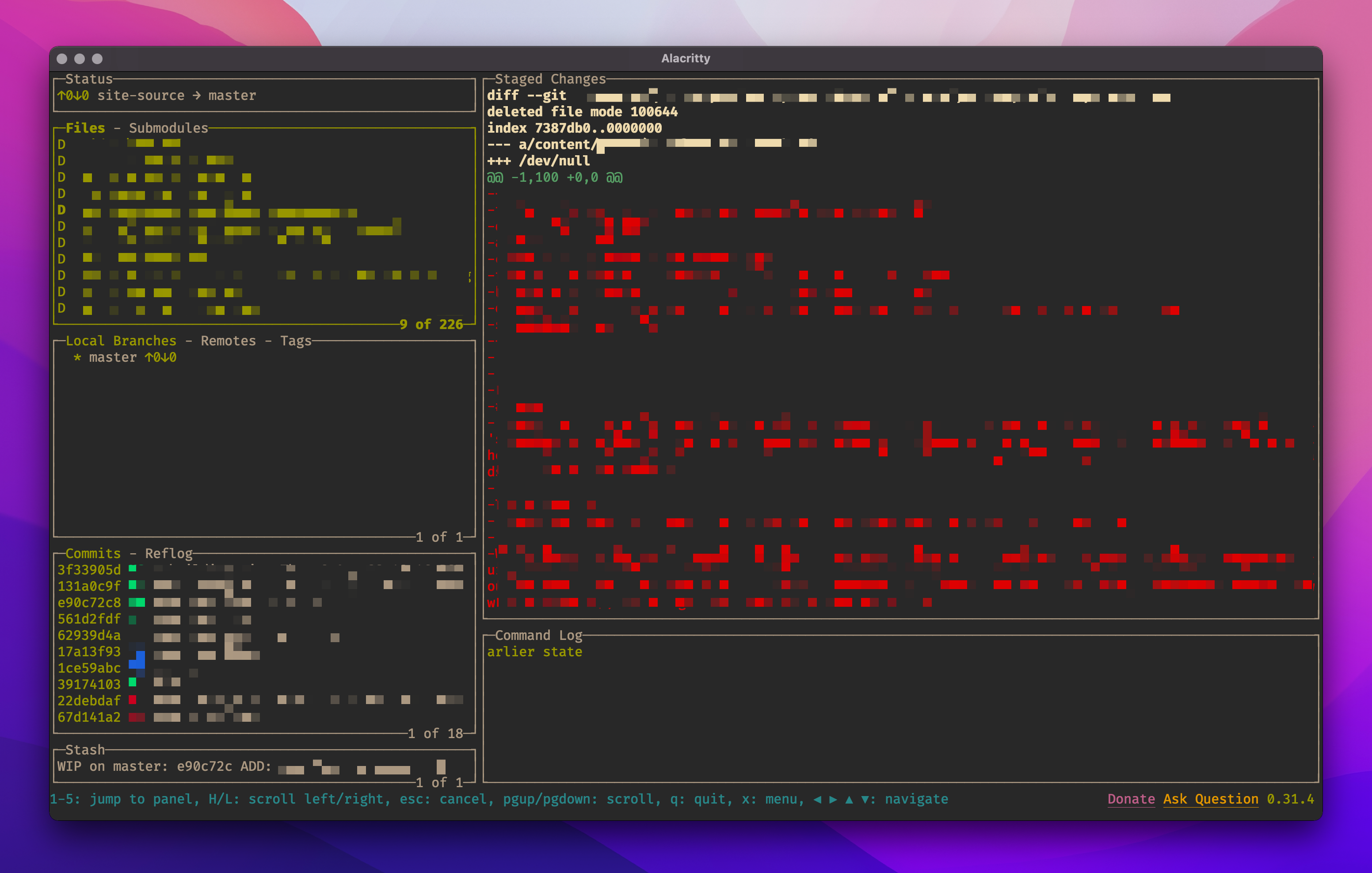Tools of The Trade :: Git

Introduction
This is the first in a series of posts about tools and processes which make my
life as a engineer better. In this first post we’ll take a look at Git .
Git is a wonderful tool. For teams working together (and
individuals!) on source code, git is the go to for distributed version control
software.
It’s assumed here that the reader already has a working knowledge of Git. This post focuses on tooling to be used on top of Git
Code Quality
Git supports hooks which may be used to trigger actions when certain events
occur, both on your local client and on the server. This
page shows more
details on them. I used to write my own hooks, until I discovered
pre-commit. This is a python based tool for managing
your git hooks. It’s easy to write your own and there is a large library of
hooks already out there on the Internet.
I use this on my client device and also in my CI to ensure that code pushed meets set expectations.
Some of the many, many things which pre-commit can do for you:
- Ensure that ansible vault files are encrypted
- Stop commiting of private keys
- Linting and style checks.
Standardised Commit Messages
Standardising commit messages is a bit more out there , but it makes sense for
a few reasons detailed below. There are a few options in this space but I prefer
Commitizen.
Somewhat confusingly there are two projects called
Commitizen. Both are great but share only a name. The one above is based onpython, the other (cz-js) is based onJavascript
Reduce Friction for contributers and maintainers
Providing templates and running git hooks helps with commit message quality, but
provides slow feedback for individual contributors. Using Commitizen
aleviates this.
You can use it to trigger CI
When combined with pre-commit (to check your commit messages conform to your
standard), users gain the ability to start creating #git-ops pipelines which
may take actions based on the contents of commit messages. Some obvious wins
here:
- Workflows for tagging and releasing code based on
semantic versioning - Automated building of changelogs
While Commitizen is very useful out of the box it’s also dead easy to extend
it and customise.
Git GUI
There are many tools for providing a Graphical User Interface ontop of git.
VSCode, which I use heavily, has many extensions worth talking about.
Out of all of these, there is one application which provides joy every time I use it:
Lazygit
LazyGit is written for users which want a Git GUI in their terminal. It reduces the friction and learning curve on doing more complex (and simple) Git operations.
It is
customisable
and works well with Commitizen
Standardised git flow
While the above tools are useful, having a standardised git flow across your is much more important. Especially if you are in a team working across git repositories.
Have this documented as a living document alongside your team’s coding standards is a good practice.
Cloning many organisation repos from GitHub
This is most easily accomplished using the Github CLI.
If using homebrew on a mac instsall the Github CLI:
brew install gh
# Login with CLI tool
gh auth login
# Set your orgname
$myorgname=yourorgname
# Clone up to 1000 repos under your current folder
gh repo list $myorgname --limit 1000 | while read -r repo _; do
gh repo clone "$repo" "$repo"
done
